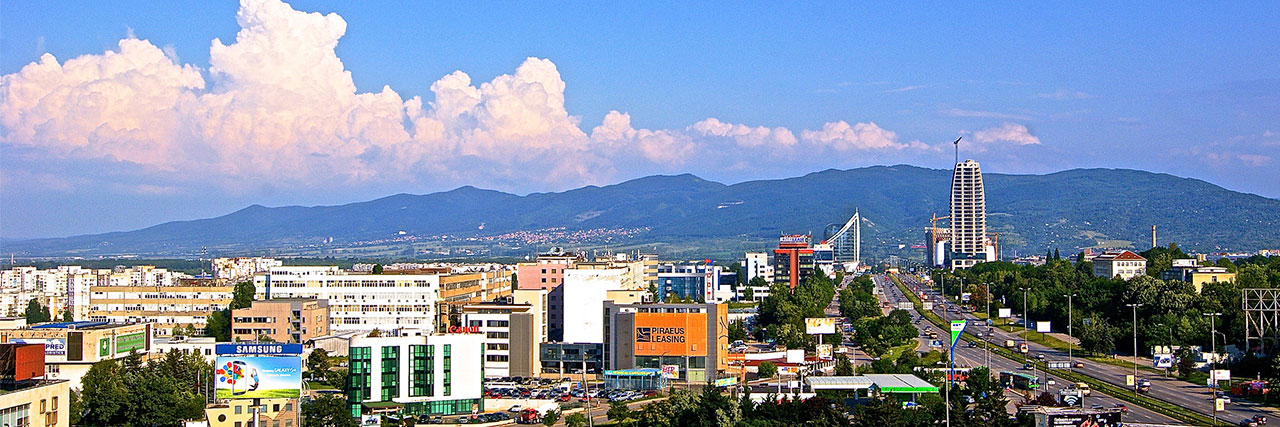The prices of office spaces in Sofia are the lowest among the 48 cities in Europe, included in a survey by the consulting company MBL. The average price per square meter in the first quarter of 2019 in the Bulgarian capital was 12-14 euros, according to the company’s report.
Sofia has the cheapest rents and high yields among other European capitals
In comparison, in the Romanian capital Bucharest, the average price per square meter is EUR 18,50 per sq.m., and in Istanbul it is EUR 28 per sq.m. An overview of the Central European capitals included in the Cushman & Wakefield survey shows that only the average rental rates for offices in Bratislava are close to those in Sofia, but still slightly higher – EUR 16.50 per sq.m. In other cities, they exceed EUR 20 per sq. m. – EUR 22.50 in Prague, EUR 23.75 per sq. m. in Warsaw, EUR 24.50 per sq.m. in Budapest and EUR 26 per sq.m. in Vienna.
At the same time, Sofia ranks second in Europe in yields from office spaces – 7.75% in the fourth quarter of last year, according to Cushman & Wakefield’s report. The company predicts that Sofia will keep this level in the coming quarters as well. Only Moscow is in front of the Bulgarian capital, where the office yield reaches 9%. Istanbul and Bucharest are ranked shortly after Sofia with yields of 7.50% and 7.25% respectively, while in the Central European capitals the yield is between 2 and 6%.
The combination of relatively low rents and high returns in Sofia attracted significant investments in office spaces last year, reaching a total of 430 million euros, turning offices into a leading segment of the Bulgarian commercial property market.
Among the large deals in the segment last year were the acquisition of the Polygraphia Office Center and Megapark by the investment fund Lion’s Head Investments with South African and Bulgarian participation, and the purchase of the Millenium Center by UBB and DZI. The office buildings at Mall Sofia and Bulgaria Mall also have new owners, the Polish company GTC and the Spanish Squircle Capital, respectively.
Prices and supply in Bulgaria
The supply of Class A, B and C offices has been steadily rising since 2010, but remains insufficient as compared to demand. This is the reason for the smooth growth of the offer prices in Sofia last year. A more detailed breakdown of Forton, a strategic partner of Cushman & Wakefield in Bulgaria, shows that they have reached a level of 15 euros per sq. m. for the highest class of offices in the center and 14 euros per sq. m. in the broad center. The rental price of Class A offices in the peripheral areas is set at a level of EUR 13 per sq. m.
In Plovdiv, Bulgaria’s second largest city, average prices of office spaces range from EUR 3 to 10 per sq. m., and between EUR 6 and 13 per sq. m. in the sea capital of Varna, according to data from the real estate agency Bulgarian Properties.
However, in the next three years, nearly 600 000 sq. m. will be added to the office space market in Sofia, which may put rental prices under downward pressure. It is expected that about 360 thousand sq. m. will be completed in 2019 and 2020.
Office areas and main tenants
Sofia’s office areas are centered around Tsarigradsko Shosse Blvd, “Hladilnika”, the Business Park in Mladost, and the area around the airport. About two-thirds of the currently being built or planned office spaces in the capital are located there. The trend in new projects is to build mixed-use buildings – a combination of homes, offices and commercial areas to operate in 24/7 mode to ease traffic on the busiest road arteries.
In 2018, the IT and outsourcing companies were a major driver of the market for quality office spaces in Sofia, and this trend has been observed over the past few years. 80% of the concluded deals in the office segment last year are due exactly to these companies, according to Colliers International.
According to the forecasts of the consulting companies in 2019, there will be no significant decline in the tenants’ activity, which will keep prices at their current levels despite the increasing supply. They also predict that in the long run, however, the projected slowdown in the growth of the economy will put pressure on both prices and the share of free spaces.






